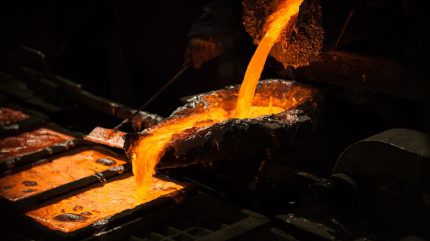
Not long ago, I had the opportunity to talk with over 300 mostly Australian participants in a Smart Energy Council webinar. It was organized to exploit my unusual timezone alignment with Oz as I spend a few weeks in New Zealand as a digital nomad. Over 600 signed up, many from other time zones to get access to the recording available from the link.
The organizer Steve Blume, former President of the Council, and I thought it would be useful to answer most of the dozens of questions in articles and share with the registrants as well. This is the third of a few articles with responses, which will be aggregated and shared by the Council as well for participants. The first article was on aviation and maritime shipping questions and the second covered biofuels and HVDC.
The framing of my prepared remarks was the Radical Electrification of Transportation. I’ve published a lot on the subject as I’ve dug through most modes over the past 15 years.

Intro slide to Michael Barnard presentation to Australian Smart Energy Council webinar
To summarize my presentation, all ground transportation will electrify. That’s cars, trucks, buses, utility vehicles, trains and mining vehicles. All inland shipping and two-thirds of short sea shipping will electrify, with only the longest routes requiring biofuels. Shipping and rail will also drop in tonnage due to removal of bulk fossil fuels from loads. Aviation will be disrupted by electric regional air mobility, autonomous flight, and digital air traffic control, and only trans-oceanic flights will require biofuels in 50 years.
That means the billions of tons of fossil fuels per year requirement for extraction, processing, refinement, and distribution are going away and being replaced by tens of millions of tons of technology metals such as lithium and cobalt, as well as a few hundred million tons of biofuels for aviation and maritime shipping. That’s all very doable.
The prepared remarks skimmed over all of that in 30 minutes or so, leaving far too little time for questions, and so I’ve chosen to respond to most of them in writing.
Hydrogen
What is the market for green fertilizer? WA recently sanctioned a large fossil fuel / SMR fertilizer plant targeting the Indian market indicating there is a limited market.
About 30 million tons of hydrogen is used today to manufacture about 170 million tons of ammonia for nitrogen fertilizers. That’s all coming from natural gas and coal hydrogen today.
That’s a huge global market, but the question is what policies are driving uptake of green ammonia? When Europe’s carbon border adjustment mechanism kicks in, that will be a driver.
Lack of green fertilizer markets is a short term problem related to the lack of a market signal requiring them, not the lack of a real market.
Of course, when applied, ammonia also creates NOx, a potent greenhouse gas, so the market has to diminish regardless, but it’s going to remain large in my opinion.
If there is no large future market for green hydrogen, how will all the renewable (solar, wind) energy generated at times of low demand be stored (or will it be wasted)?
There’s an electricity ecosystem that will feature some overbuild of wind and solar, a lot of transmission, a reasonable amount of grid storage in the form of pumped hydro, redox flow batteries and cell-based batteries, and some demand management. That will account for about 95% of circumstances. The remainder will be competed for by various low capex solutions which will favor cheap energy for best profits. There isn’t a ton of room in that world for green hydrogen to expand.
But there is a big market for green hydrogen nonetheless. The 120 million tons we manufacture from fossil fuels and use — the biggest market is oil refining — is a climate change problem on the same scale as all of aviation globally. The hydrogen demand that isn’t going away as we radically reduce refining oil, especially high sulfur crude like Alberta’s and Venezuala’s, needs to be replaced with green hydrogen.
To pick on 2019, that year’s total renewable electrical generation globally was just sufficient to make all of the hydrogen we manufacture today. We’re not going to be building multiples of that to turn hydrogen into an inefficient and ineffective store of energy.
What do you see as the role of green hydrogen from isolated massive geothermal potential locations?
If I understand the question, it’s not about white or natural hydrogen, but using geothermal heat and electrical generation to drive manufacturing of green hydrogen.
And in that case, I point to a very clear signal from our global economy about hydrogen today: 85% of hydrogen is manufactured at point of use.
Why? Because distributing hydrogen as a molecule is absurdly expensive. As a gas it’s incredibly prone to leaking, embrittling steel and messing with electronics, as well as being very low in density by volume. People claiming we’ll be putting it in pipelines and ships are blowing smoke. People claiming we’ll reuse existing natural gas or oil pipelines for hydrogen are blowing opium smoke.
Reuse of existing pipelines would require radically lower volumes of hydrogen than natural gas. The energy delivered would be a fraction of natural gas energy due to the physics of the molecules. And retrofitting existing pipelines is a bit expense, as not only the interior needs coating typically, but new compressors, electronics and sensors are required along the length of the pipeline for that lower energy delivery. Building new pipelines is even worse.
Every pipeline for hydrogen study I’ve looked at keeps making the same mistakes of drawing the system boundaries really poorly, or making completely unsupportable assumptions in favor of hydrogen and against HVDC.
Shipping hydrogen in ocean tankers as we do LNG would be at minimum five times the cost per unit of energy as LNG giving hydrogen shipping every benefit of the doubt. And as a reminder, LNG imports are already the most expensive form of energy any country has, and are used only as a last resort to keep the lights on.
If there’s a big geothermal plant in the middle of nowhere, in other words, manufacturing hydrogen with it probably doesn’t make sense compared to transmitting the electricity to demand centers which include places which make hydrogen at point of use.
There might be some cases where manufacturing ammonia fertilizers at a geothermal location makes sense, and if there’s a geothermal location near an iron mine, then manufacturing green iron with the hydrogen could make sense.
What would you say to a trucking company about to invest in hydrogen infrastructure?
Don’t do it.
Hydrogen for trucking is a dead end. Battery energy densities that are commercially available today and at high technology readiness levels will provide thousands of kilometers of fully loaded range. Electricity to battery to motor to wheels is at least three times as efficient as electricity to hydrogen to motor to wheels in the best case scenario for hydrogen, so operational costs will always be three times as high. And hydrogen fuel cell trucks are much more expensive than battery-electric trucks, but get no economy of scale advantages from light vehicles, so will never have lower capex costs.
Pay more for trucks. Pay more for energy infrastructure. Pay more for energy. What rational trucking company would want to do that?
I always like to look at examples from around the world where the experiment has already run its course to see what the results are. China has 1.1 million battery-electric buses and trucks on its roads, and under 10,000 fuel cell vehicles. Mining giants Rio Tinto, BHP, and FMG have all come out recently and said that all mining vehicles would be battery-electric.
There’s no future in hydrogen for trucking, so any money a firm puts into it is wasted.
What is your opinion on the UMich device which purports to be an artificial photosynthesis device 10 times more efficient and one hundredth the size of previous devices of its kind?
Mostly that it’s a so-what.
The efficiency claims are for direct use of sunlight to convert water to hydrogen at the point of sunlight hitting the cell. That means that to produce any useful amount of hydrogen, you would have to pump an awful lot of water into tiny cells, then capture the hydrogen that bubbles out of it across a very large area.
As a way of thinking about this, we can take a dirt cheap solar farm and connect it with basic wiring. The electricity across that area can be concentrated into an industrial scale electrolysis facility with big pumps, big pipes and big electrolyzers working very efficiently.
Or we can construct the same scale of solar farm, because this remains an energy equation, and spread pumps for water and tiny tubes across the entire expense, have tiny hydrogen capture pumps at each cell, then spread a parallel but completely separate network of hydrogen tubes that collect all that hydrogen. We’d have virtually the same electrical wiring to monitor, control and operate the system, but it would be paralleled by two separate gas and liquid distribution systems.
And while the cell might be cheap in its class of technology, it won’t be nearly as cheap as photovoltaic cells.
This might be useful in outer space. It’s not particularly relevant on earth.

What is your perspective on CSIRO, Australia’s national science agency, and GHD Advisory calling for Australia to focus on hydrogen-powered transport — alongside electric vehicles — or risk being left behind our international counterparts?
That CSIRO used to be a solid organization that got things right, and that it was beaten up a lot by the previous federal administration.
I used to cite CSIRO research regularly. Not much for the past decade. Now it’s a bit iffy as to the quality of things that come out of it.
This is a case in point. That CSIRO came to this conclusion makes it clear that it has fallen far from its previous pinnacle of excellence. You can’t look at the global data on hydrogen for transportation, the thermodynamics, or the economics seriously, compare it on a level playing field with real world alternatives and find that it should be taken seriously.
That fossil fuel majors are pushing hard to make hydrogen a store of energy doesn’t make it make sense.
In any case, this was a report for hire from GHD. When you buy a consulting firm’s services, you get the results you want. Who paid for the report and who set the terms is a reasonable question with nonsense like this.
What about Rolls Royce’s plans to make some EVs into electric cars?
That only Bond villains will have home hydrogen refueling, and Rolls Royces are favored by Bond villains, so there’s a great demographic match, even if only in a cinematic fantasy world.
And so, another set of questions asked and answered. Still to come, fossil fuels, politics and more.
I don’t like paywalls. You don’t like paywalls. Who likes paywalls? Here at CleanTechnica, we implemented a limited paywall for a while, but it always felt wrong — and it was always tough to decide what we should put behind there. In theory, your most exclusive and best content goes behind a paywall. But then fewer people read it! We just don’t like paywalls, and so we’ve decided to ditch ours. Unfortunately, the media business is still a tough, cut-throat business with tiny margins. It’s a never-ending Olympic challenge to stay above water or even perhaps — gasp — grow. So …




